Suspicious network employing AI-generated photos used geotagging to pollute protest-related search results

The Russia-wide demonstrations in support of opposition leader Alexey Navalny on January 23, 2021 were accompanied by suspicious social media behavior targeting the gathering in Moscow. Ahead of the protests, newly created inauthentic accounts hijacked the Instagram geotag for Moscow’s Red Square with AI-generated faces and Navalny posters. AI-generated faces are an increasingly common feature of inauthentic accounts, an alternative to using stolen photos of real users that can be detected through a reverse-image search.
Navalny survived a near-fatal nerve agent attack in August 2020. Later, investigative outlet Bellingcat and Navalny himself presented evidence linking the Russian FSB to his poisoning. German, French, and Swedish laboratories have confirmed that Navalny was poisoned with a Soviet-era Novichok nerve agent. Navalny, who had been recovering in Germany from the poisoning, returned to Moscow on January 17 and was detained at the airport. He called on Russians to protest his detention.
January 23 marked the largest day of demonstrations in Russia against the government in support of Alexey Navalny thus far. Tens of thousands of Russians took to the streets across at least 85 cities to protest the jailing of the opposition leader. More than 3,300 people were detained as a result.
Inauthentic accounts with AI-generated faces
On January 20, three days before the Navalny protest were scheduled to take place, the Russian Telegram channel Baza reported on the suspicious behavior on Instagram. According to the channel, on January 17, the day Navalny returned to Moscow, the suspected network attempted to hijack the Instagram geotag Red Square. Baza suggested a bot network of some sort was behind it, flooding the archive of posts marked with the Red Square geotag. “As a result,” they wrote, “any posts with this mark drowned in the same type of publications — they were simply replaced by hundreds of photographs of faces generated by neural networks.”
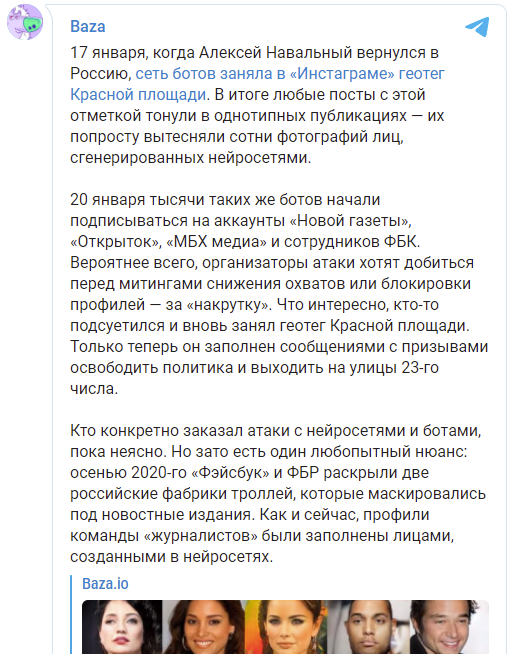
Adjacent to the Kremlin, Red Square has been a popular location for opposition protests. Russian authorities have a long track record of blocking the square in order to disrupt demonstrations.
Prior to the January 23 protests, Navalny’s team announced plans for mass gatherings across Russia, publishing a list of cities, specific locations in those cities, and times. Moscow’s Red Square was not on the list of locations — the main protests in Moscow were planned for Pushkinskaya Square, which is approximately a 20-minute walk from Red Square. On the day of the protests, Russian authorities blocked Red Square, in a likely attempt to prevent demonstrators from approaching the Kremlin.
Immediately prior to the protests, posts geotagged Red Square on Instagram appeared to be flooded with content unrelated to the location. Geotags allow users to search for locations on the platform to see what kind of content was posted from the specific area. Search results display the latest posts geotagged with that particular location. In this case, Russian users might have been searching for the Red Square geotag to check for developments related to the January 23 protests, despite the Square not being the official demonstration location for these particular protests.
From January 17 onward, Instagram serach results for Red Square returnined the same type of images: profile pictures of various individuals. The DFRLab has determined these images are generated by StyleGAN, a type of neural network that can generate synthetic faces.
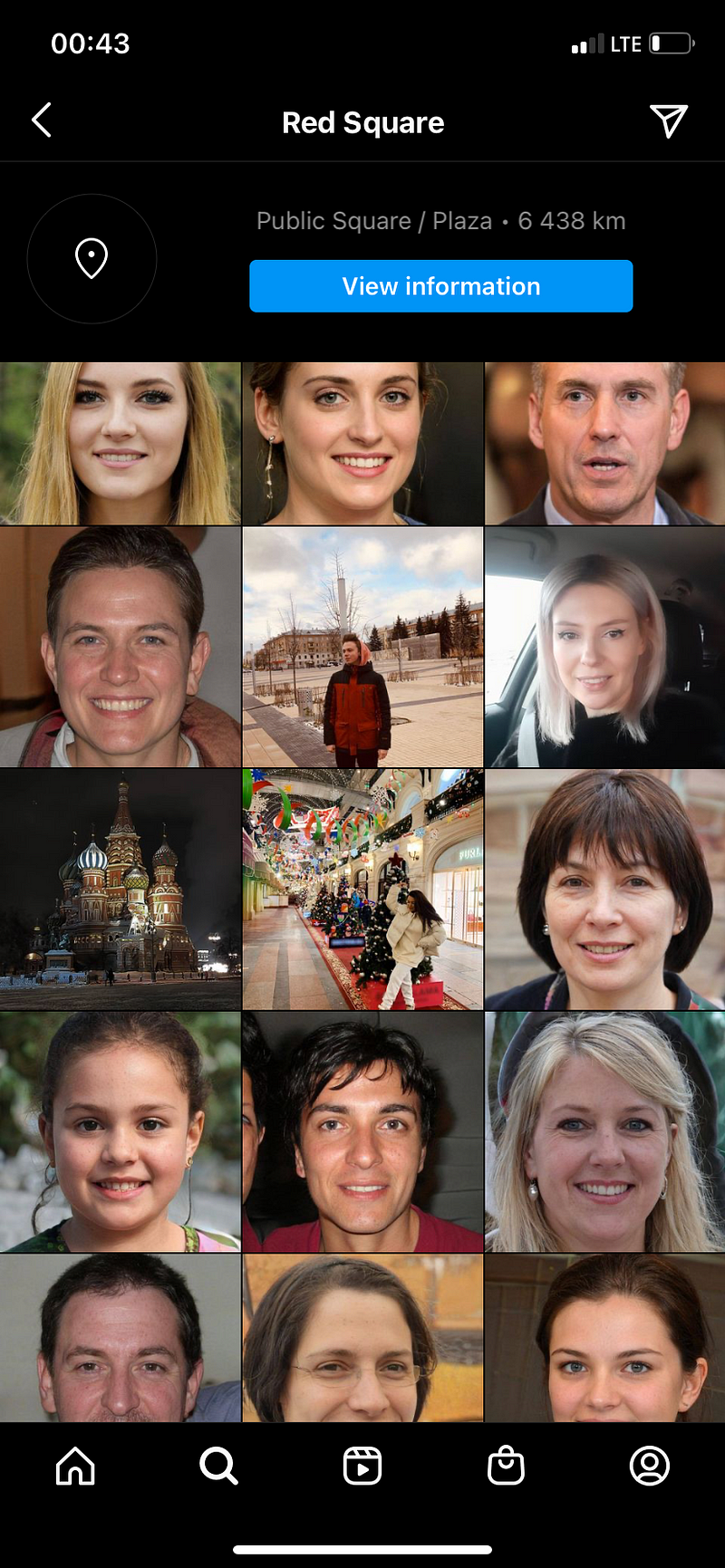
These images also appeared as Instagram Top Posts. Top posts appear on trending hashtags and places to show some of the most popular posts tagged with that hashtag or place.

All of the suspicious accounts posting these kinds of images were created between January 15–17, 2021 and uploaded their content the same day. The handles of the accounts included Russian female surnames followed by numbers, and some of their profile pictures had photos of men. The accounts had few posts, few followers, and close to zero engagement. These characteristics suggest these accounts were inauthentic, and possibly automated.
While the algorithms used to create these pictures have advanced rapidly, the trained eye can still recognize some of the telltale signs of a GAN-generated face, including distorted background details and artifacts in the rendering of hair, eyes, lips, ears, and accessories.
For example, three AI-generated faces from the abovementioned network show the following artifacts: on the left image, the artifacts in hair are marked in green. Hair is unnaturally blended in with the skin, as if it is of the same texture. In the central image, the artifacts are marked in yellow: the child’s ear blends into the background, as does the hair. In the right image, the primary artifact is marked in red, showing how the end of the sunglasses blends into the man’s ear and hair.

Another characteristic of GAN-generated faces is that the eyes occur in the same position, regardless of the orientation of the computer-generated face. Detecting this uniformity across potential AI-generated images can be a helpful technique to recognize these profiles on social media. The following image shows an example of this technique.
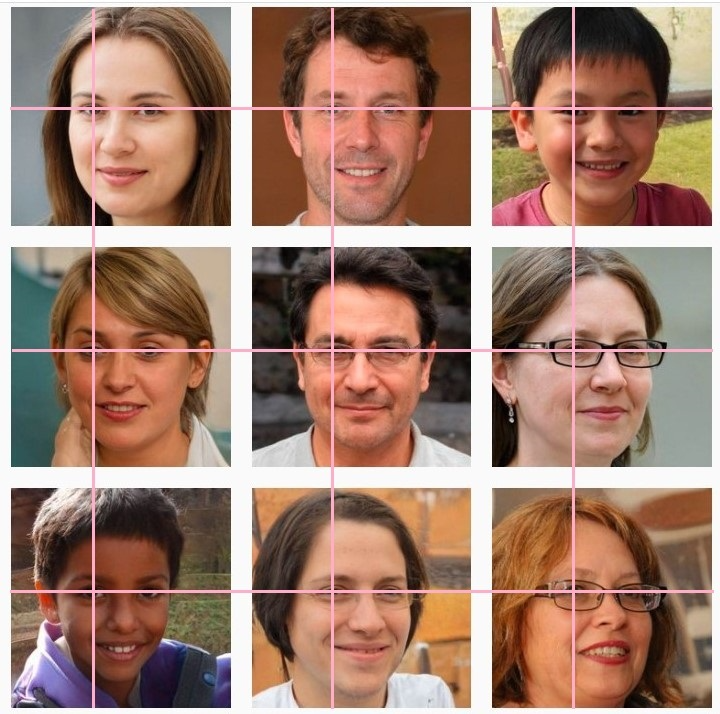
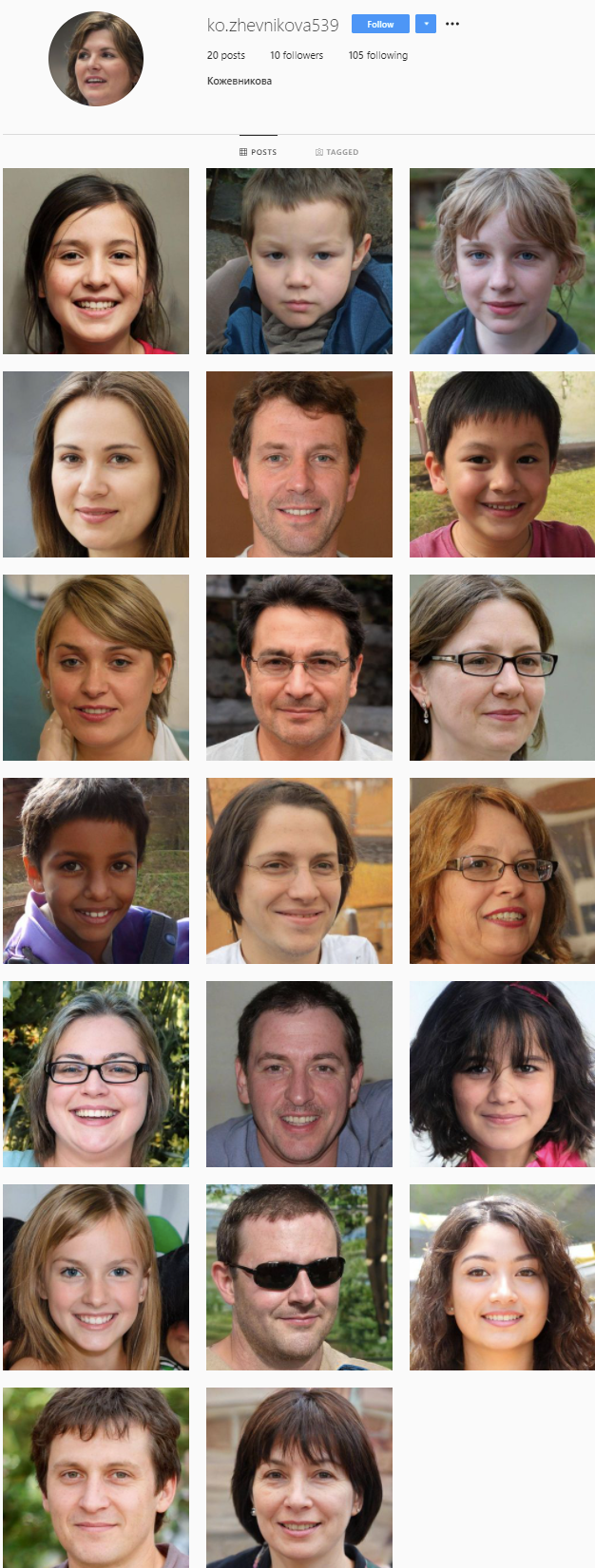
Navalny protest posters: misdirection?
In addition to this group of accounts posting AI-generated faces, another type of account tried to hijack the Red Square geotag on January 20 by posting protest posters in support of Navalny, possibly in an attempt to re-direct protesters to the wrong location.

These suspicious accounts were created on the same day, January 20, but instead of AI-generated images, they used posters in support of Navalny ahead of the protests scheduled for January 23. The user handles were similar, and included different variations of the words “freedom to Navalny” in Russian, but written with Latin letters. For example, two account handles were svobo_dynavalnomy and svobodu.navalnomy. The accounts had few followers and low engagement — around 40 likes per image.
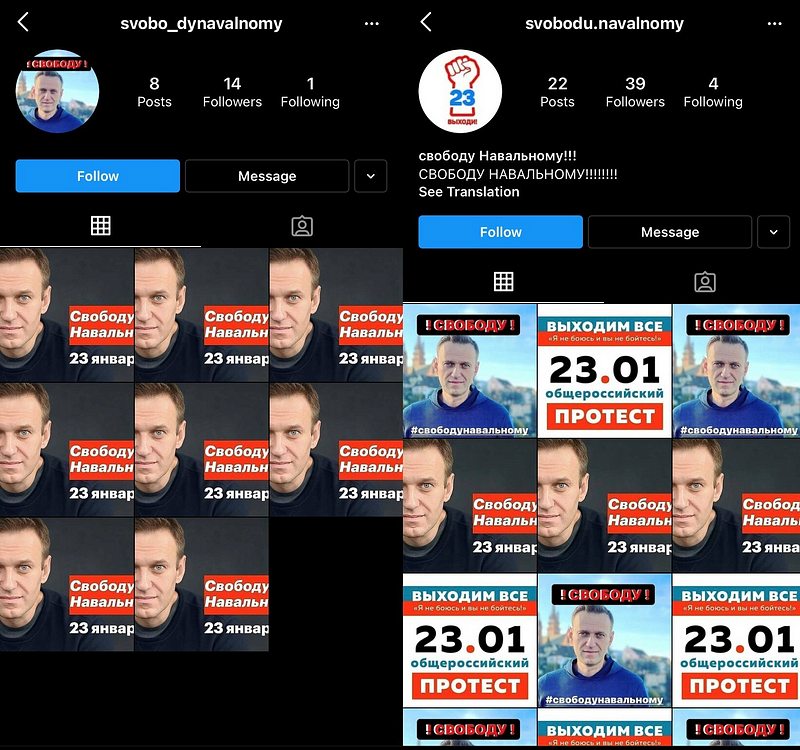
Interestingly, the Navalny supporting posters did not specify the location of the demonstrations. By geotagging the Red Square, the accounts may have been intending to mislead Instagram users about the planned location of the protests, Pushkinskaya Square.
Team Navalny, others reports possible bot activity
In the midst of these activities, Navalny team members, as well as several Russian outlets, reported possible bot activity on their Instagram accounts: specifically, that bots with AI-generated faces were following them en masse. The suspicious activity was reported by Navalny press secretary Kira Yarmysh, Navalny Anti-Corruption Foundation staffer Georgy Alburov, lawyer Lyubov Sobol, and the media outlets Novaya Gazeta, MBX Media, and Otkrytka.
Какой-то адский наплыв ботов в инстаграме. Для чего это вообще делают? pic.twitter.com/55z8M6eMrl
— Георгий Албуров (@alburov) January 20, 2021
Инстаграм «Новой» и других независимых СМИ и активистов атаковали боты. Мы уверены, что это делается накануне 23 числа, чтобы блокировать нашу работу! pic.twitter.com/DelIBE0XsZ
— Новая Газета (@novaya_gazeta) January 20, 2021
These accounts demonstrated several indicators of inauthentic activity, including the use of AI-generated faces and no other profile information, as well as flooding a geotag with suspicious content. Their recent creation dates, simultaneous posting, and bulk following behavior may perhaps indicate they employed some sort of automation, which may violate Instagram’s terms of use and result in an account suspension or shadowban.
Eto Buziashvili is a Research Associate, Caucasus, with the Digital Forensic Research Lab.
Follow along for more in-depth analysis from our #DigitalSherlocks.

